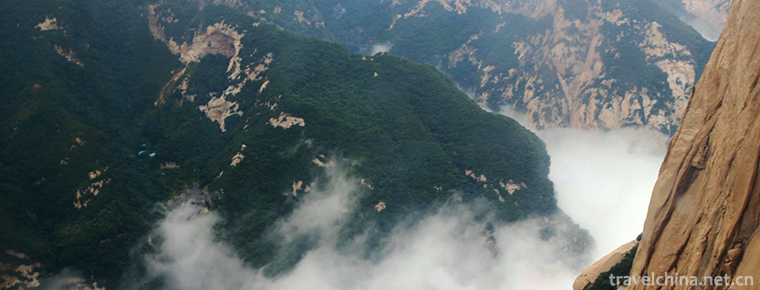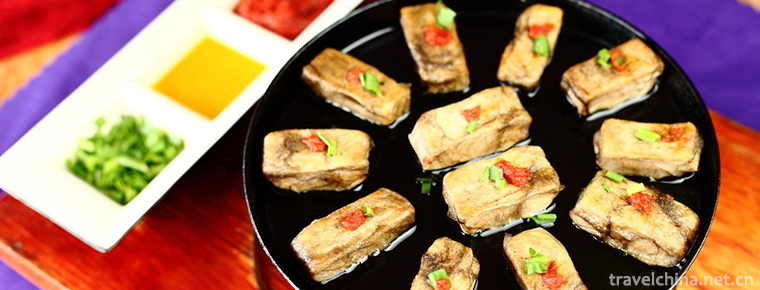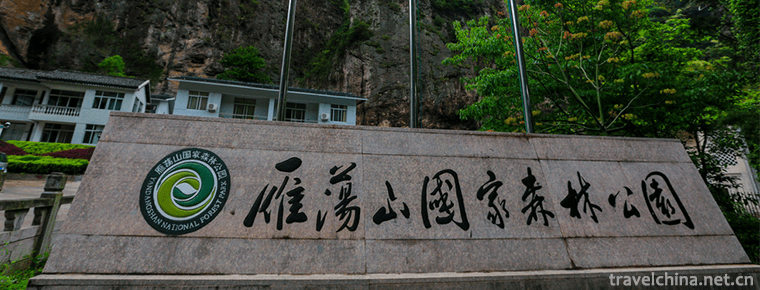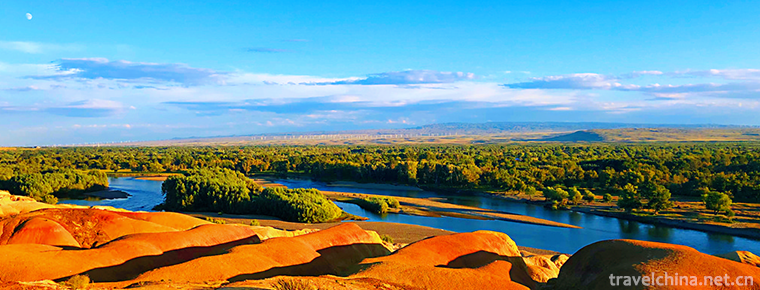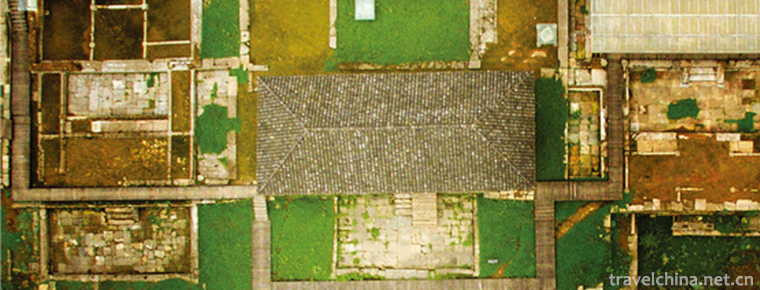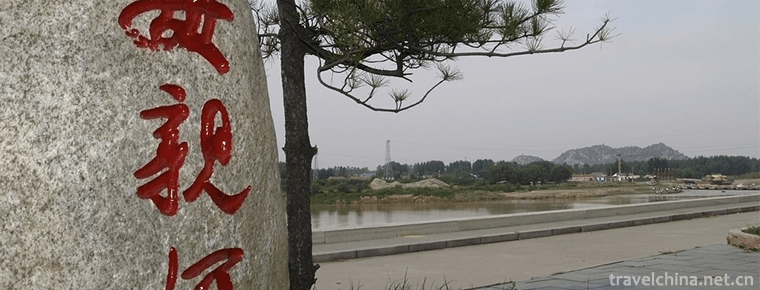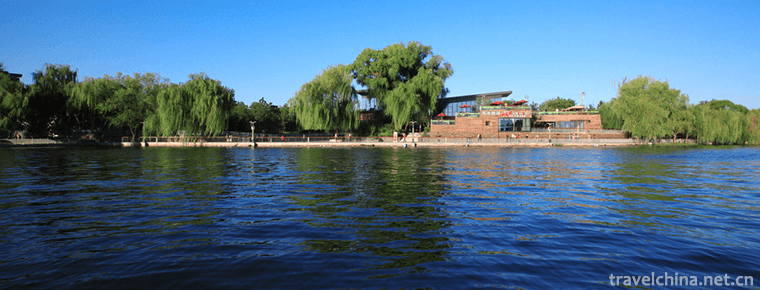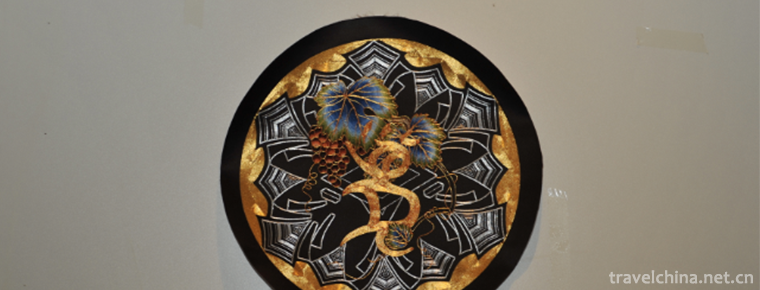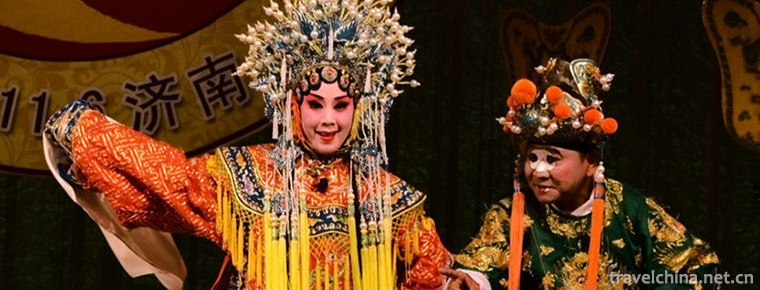The Dazu Rock Carvings
Dazu Stone Scenic Area is a religious cliff sculpture in the late Tang and early Song Dynasty, with Buddhist themes as the main theme, especially the Beishan Cliff sculpture and Baoding Mountain Cliff sculpture, which are the most famous ancient Chinese stone sculpture art. Beishan Cliff Statue is located in Beishan, 1.5 kilometers north of Dazu District, Chongqing. Beishan Cliff Statue, about 300 meters long, is a national key cultural relic protection unit and world cultural heritage. The statue was first excavated in the first year of Jingfu in the late Tang Dynasty (AD 892). It lasted more than 250 years from Houliang, Houtang, Houtjin, Houthan, Houtzhou and Five Dynasties to Southern Song Dynasty 1162. More than 4600 existing sculptures are outstanding representatives of the late grotto art in China.
Main attractions
Dazu Rock Carvings
Dazu, the ancient name of "Begonia Xiangguo", is located in the northwest of Chongqing, and is a famous stone carving town in the world. Dazu Stone Carvings are the collective name of the cliff stone carvings in its territory. There are more than 70 stone carvings, totaling 100,000. Among them, Baoding Mountain and Beishan Stone Carvings are the most famous and well preserved.
Dazu Stone Carving was founded in the late Tang Dynasty and flourished in the Song Dynasty. It mainly consists of Buddhist statues. Confucian and Taoist statues coexist. It is beautiful, brilliant and true.
It embodies the historical integration of foreign Buddhist culture and traditional Confucianism and Taoism culture, and concentrates on the core values of loyalty, filial piety, honesty, propriety and shame of the Chinese nation. It has influenced China and the world so far, and is an outstanding representative work of the late grotto art of China.
On December 1, 1999, Dazu Stone Carvings (Baoding Mountain, Beishan Mountain, Nanshan Mountain, Shimen Mountain and Shizhuangshan Stone Carvings) were listed as the World Heritage List by UNESCO. It is now a national key cultural relic protection unit and a national AAAAA-level tourist attraction.
Baoding mountain carved stone
characteristic
position
Baoding Mountain is located in Baoding Town, 15 kilometers northeast of Longgang Town, Dazu, 527.83 meters above sea level.
Statues
Baodingshan Stone Carvings, made by Zhao Zhifeng, a "sixth generation ancestor who passed on secret seals" with the perseverance of one generation of master, lasted more than 70 years from Chunxi to Fuziyou in the Southern Song Dynasty (A.D. 1174-1252). The overall conception and organization of the carvings were excavated. They are a large Buddhist Tantra Taoist temple.
With magnificent carvings, magnificent spectacles and rich flavor of life, nearly 10,000 statues are like a series of pictures carved on a 500-meter-long cliff wall. Their contents are connected and their carvings are identical, thus pushing Chinese grotto art to the top. One thousand hands and one thousand eyes Guanyin video is known as the "national treasure in the national treasure".
Beishan stone carving
Beishan Stone Carvings is a holy place for Buddhist Grottoes art appreciation in Dazu. Characters have distinct personality, graceful body, proportionally proportioned, gorgeous dress, decorative body, flower clusters and beads, exquisite and exquisite, full of decorative flavor. Puxian Bodhisattva statue is known as "Oriental Venus", "Manjusri Bodhisattva statue" is known as "Oriental Beautiful Man". Shuzhushu Guanyin statue is nicknamed "Meisheng Guanyin". Therefore, Beishan Stone Carved with the reputation of "the exhibition hall of Chinese Guanyin statue" is recognized as "a pearl on the crown of Chinese Grottoes art".
position
Longgang Mountain, the ancient name of Dazu Beishan, is 1.5 kilometers north of Longgang Town and 545.5 meters above sea level.
Statues
Beishan Stone Carvings, located in Fowan, were excavated from the first year of Jingfu in Tang Dynasty to Shaoxing in Southern Song Dynasty (AD 892-1162). The statue cliff is about 300 meters long and 7-10 meters high. The statue niche is as dense as a beehive. It is divided into two sections, South and north.
There are nearly ten thousand statues with 51 kinds of themes, mainly Buddhist Secret Sect. Secondly, there are three ranks of religion and Jingshizong, which are different from the early Grottoes in China. Runner 136 through Tibetan Grottoes is the essence and representative of Song Dynasty stone carvings, which can be called the "treasure of Zhenshan" in Beishan stone carvings. Cave Zhengzhong Guanyin statues are beautiful, delicately carved, lifelike, harmonious overall layout, intact and intact, which can be called the grand collection of Oriental gods of beauty.
Shimen mountain stone carving
The theme of Shimenshan stone carvings is mainly about the stories of Buddhist and Taoist figures. It is the largest statue area of Buddhism and Taoism in the Dazu stone carvings, especially the statues of Taoist grottoes, which have the most artistic characteristics. The works are full in shape and lifelike in manner. They combine the majesty of God with the vivid expression of human beings and are unique in Chinese grotto art.
position
Shimen Mountain Grottoes is located on the top of Shimen Mountain in Xinsheng Village, Shima Town, East of Dazu City, Chongqing, because there are two huge stones in the mountain.
Statues
Shimenshan Grottoes were excavated from Shaosheng in the Northern Song Dynasty to Shaoxing in the Southern Song Dynasty (A.D. 1094 - 1151). They were built along the cliff, with a total length of 71.8 meters, a height of 3.4 - 5 meters and a statue of 12 niches. The stone statues or immortals or interpretations, ghosts and gods, living in a district, are exquisite, exquisite, and exquisite. In addition, there are 20 statues, 8 tablets, 8 inscriptions, 8 training records, and the names of artisans such as Wen Yi, Wen Judao and Bi Zhongjin.
Stone seal stone carving
Shizhishan stone carving is the earliest statue area of Confucianism, Buddhism and Taoism in China. Especially the statue of Confucius Ten Philosophical Niches in niche 6 Confucian Grottoes is rare in the world. There are nine groups of statues in Shizhishan, with about 45,000 bodies. Among them, Tibetan statues, Laojun Cave, Buddhist Cave III, Wenxuan Wang Cave, Wenshu Cave and Luban Cave are well preserved. The rest are indistinguishable.
position
Shizhuan Mountain is located in Fohui Village, Sanji Town, about 20 kilometers away from Dazu District, Chongqing. It is 444.6 meters above sea level. It is named after the word "seal" because of its circular shape.
Statues
Shizhishan stone carvings, excavated in 1082-1090 A.D. (five years from Yuan Feng in the Northern Song Dynasty to three years from Shao Sheng), are the most valuable group of stone carvings with historical research value. Gong Zhengbi's main portrait is Empress Henry, Fengguan Xiamen, crown belt hanging over shoulders, beautiful face, necklace, wearing a long-sleeved clothes, ribbon hanging over shoulders and pressing arms on both sides. He sat on Baoxuan platform with his left hand on his left knee, his right hand on his chest with a lucky fruit, and his feet on his boots and holes.
The main image has a waitress on the left and right, with head plate and buns slanting over both ears, and a long skirt with a tie at the waist. On the right wall of the right maid, she carved a breast-feeding mother and two children, her nipples twisted, her earlobes hung, she wore a long open-necked gown with wide sleeves, her breasts exposed, and her hands were holding a child in her arms. The child was innocent and lively, and she was cute, or sleepy, or playing games.
Dazu Baoding Mountain stone carvings include nearly 10,000 large Buddhist esoteric monasteries in Dafowan and Xiaofowan, centered on the Sacred Life Temple. Every Buddhist Scripture contains all of them. Almost all of them have collected a generation of great religions, and they have nationalized, lived and secularized Buddhist allusions with innovative forms and exquisite skills of "the humanization of God and the deification of man". It is the essence of Dazu stone carving that tourists of all kinds of cultural levels can appreciate and understand.
Nanshan stone carving
The Nanshan stone carvings in Dazu are represented by the ancient caves of the Three Qing Dynasty, with 421 carvings. The shape of the caves reflects the application of the method of "revolving around one" in Taoist rituals. Among the Taoist grottoes of the Song Dynasty in China, the grottoes are the most exquisite and have high religious, historical and artistic values.
position
Nanshan, an ancient name of Guanghua Mountain, is located 2 kilometers south of Longgang Town, Dazu. It is 514 meters above sea level. It is known as "Nanshan Cuiping" and has been one of the ten sceneries of Dazu since ancient times.
Statues
Dazu Nanshan Grottoes statue was excavated in Shaoxing period of the Southern Song Dynasty (1131-1162 A.D.). Its face is 86 meters long and 3.5 to 10.2 meters high. There are 15 niches in the statue. It is the most concentrated and complete statue of Pure Taoism in Chinese grotto art and the most bookish Grottoes in Dazu grottoes. It vividly reflects the historical fact that Taoism in the 12th century A.D. has evolved from the worship of the early old monarch and the "three officials" to the belief of "three Qing Dynasty" and "four imperial powers" with clear deities.
geographical environment
Dazu Stone Carving is the general name of the grotto art in Dazu District of Chongqing, which is mainly represented by cliff statues. As the "World Cultural Heritage" of the United Nations, the first batch of 5A scenic spots in the country, one of the eight Grottoes in the world, is known as "Pearl of Oriental Art". It is a famous artistic treasure, historical treasure house and Buddhist holy place. Many politicians and celebrities at home and abroad marvel at it and praise it. It is a must-visit place for Chinese and foreign tourists to Sichuan and Chongqing. There are more than 70 stone sculptures in Dazu Group, totaling more than 100,000 bodies. Among them, Baoding Mountain and Beishan Cliff Carvings are the most famous, representing the highest level of stone sculpture art in Tang and Song Dynasties in China.
Historical culture
History
Dazu grottoes are mainly Buddhist statues, while Confucian and Taoist statues are combined with Chen. They fully demonstrate the core values of loyalty, filial piety, integrity, etiquette and shame of the Chinese nation. They are the model of the late grotto statue art in China and are as famous as the four major Grottoes in China, such as Mogao Grottoes, Yungang Grottoes, Longmen Grottoes and Maiji Mountain Grottoes in Dunhuang. The magnificent scale, exquisite art, rich content and well-preserved are rare in the world. Dazu District has a long history and rich tourism resources. Stone sculptures are scattered all over the region. Up to 75 cliff sculptures have been published as cultural relics protection units, with more than 50,000 statues and more than 100,000 inscriptions, including 6 key cultural relics protection units in China. Baoding Mountain Cliff Statue was first excavated in the Southern Song Dynasty. The statues of Buddha were carved on 2.5 kilometers of surrounding rock, including the statues of Big Buddha Bay and Little Buddha Bay centered on Shengshou Temple. Dazu Dafowan is the main body, followed by Xiaofowan, which is distributed in the east, South and north. There are more than 360 giant sculptures, with six reincarnations, the most famous of which are Baolou Pavilion, Huayan Sansheng Statue and Thousand-Handed Avalokitesvara. Baoding Dafowan is located in the ancient temple Shengshou Temple in eastern Sichuan, which was founded in the Southern Song Dynasty. The temple is lofty and full of carved beams. It is situated among the majestic and elegant trees. The South rock on the side of the temple is the Longevity Tower, which is a two-storey eaves and warping angle pavilion with unique shape. Beishan Cliff Statue is located at the top of Beishan 1.5 kilometers north of Dazu City. It was excavated from the first year of Tang Jingfu to the last year of Shaoxing in Southern Song Dynasty (892-1162). It is built on rock, long as Lixu, like a crescent moon, and its niches are dense as beehives. It is divided into two sections, South and north. It is known for its fine carving, superb skills and elegance. It is known as the "stone" between the end of the 9th century and the middle of the 13th century. Grotto Art Gallery. Among them, Wei Junjing's Stele carved in 895 A.D. has an important value in supplementing the history of Tang Dynasty; Zhaoyi Jiangong's Shinto Stele carved in 1163-1189 A.D., written by Cai Jing, one of the four calligraphers of the Song Dynasty, is a treasure of calligraphy art; and Chapter 22 Ancient Wen Xiaojing Stele is called "only this moment in the universe" by historians. Nanshan, the ancient name of Guanghua Mountain, is located in the southeast direction of Dazu District, Wuhua Li. On the top of the mountain, there was Taoism and Yuhuang. Nanshan stone sculpture originated in the Southern Song Dynasty (1127-1279 AD), belongs to Taoist statues. The Ming and Qing dynasties were supplemented slightly.
Culture
On December 1, 1999, it became the UNESCO World Cultural Heritage Site.
Registered for meeting the following criteria for assessing the World Cultural Heritage: (i) representing a unique artistic achievement, a creative masterpiece of genius; (i i) having a great influence on the development of architectural art, monument art, urban planning or landscape design in a certain period of time or in a certain cultural region of the world; (i I i) providing one for a lost civilization or cultural tradition. A unique witness, at least a special witness.
On December 1, 1999, the UNESCO World Heritage Committee voted at the 23rd session of the World Heritage Committee held in Marrakech, a famous historical and cultural city of Morocco, on the basis of the selection criterion C (I) (II) (VI). Five cliff statues of Beishan, Baoding, Nanshan, Shizhishan and Shimen Mountains in Dazu Stone Carvings were officially included in the World Cultural Heritage. Only one of the World Heritage Sites declared by China has been approved, that is, the World Cultural Heritage "Dazu Stone Carving", which is also the second selection of China's grotto carving heritage after the Mogao Grottoes in 1987.
According to the World Heritage Committee, there are unique series of stone carvings on the precipitous cliffs of Dazu area, spanning from the 9th century to the 13th century. These stone carvings are famous for their high artistic quality and varied themes. From secular to religious, they clearly reflect the daily social life of this period in China, and fully prove the harmonious coexistence of Buddhism, Taoism and Confucianism in this period.
Tourist guide
Tickets for scenic spots
1. In peak season (March 1-November 30), Baoding Mountain Stone Carvings (including Shengshou Temple): 115.00 yuan Beishan Stone Carvings: 70.00 yuan Nanshan Stone Carvings: 5.00 yuan Shengshou Temple: 15.00 yuan joint ticket (including Baoding Mountain Stone Carvings, Beishan Stone Carvings, Shengshou Temple): 140 yuan
2. Off-season (December 1-February 28) stone carvings on Baoding Mountain (including Shengshou Temple): 110.00 yuan Beishan stone carvings: 70.00 yuan Nanshan stone carvings: 5.00 yuan Shengshou Temple: 15.00 yuan joint ticket (including Baoding Mountain stone carvings, Beishan stone carvings, Shengshou Temple): 120.00 yuan.
Traffic information
Self driving
Starting from the urban area, we drive the West highway. Sanya is 23 kilometers to Haikou. We can get down the highway at the exit of Yacheng and Xiaodongtian. Then we can reach Xiaodongtian and Xiaodongtian according to the road sign.
Surrounding area
Yulong Mountain National Forest Park, Longshui Lake Leisure Resort, Dazu Shima Catholic Church , Dazu Buddha Temple , Dazu Mass Temple .












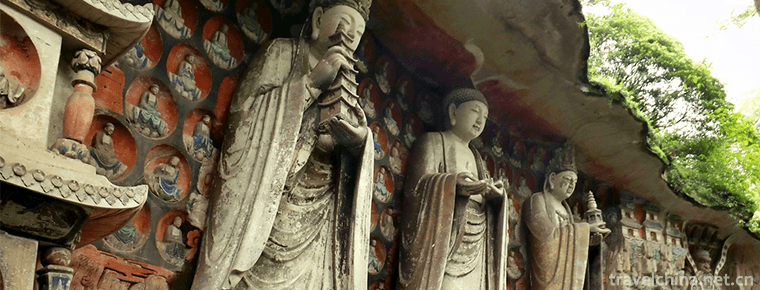
-
Mount Hua
Mount Hua, known as "Xiyue" and "Taihua Mountain" in ancient times, is one of the five famous mountains in China and the birthplace of Chinese civilization.
Views: 339 Time 2018-10-30 -
Mao tofu Fried bean curd
Mao tofu Fried bean curd is a famous traditional dish in Huizhou, Anhui Province, and is well known for its vegetarian delicacies at home and abroad..
Views: 232 Time 2018-11-27 -
Yandang Mountain Scenic Spot
Yandang Mountain, the first batch of national key scenic spots, has the titles of "Sanitary Mountain, Safe Mountain, Civilized Mountain", National Civilized Scenic Spot, National AAAAA Touri.
Views: 190 Time 2018-12-07 -
Wucai Beach
The Wucai Beach is located in Buerjin County, Altay area, north end of Xinjiang. It is located on the first and second terraces on the North Bank of Ertiz River, the only one injected into the Arctic .
Views: 101 Time 2018-12-22 -
Hailongtun Site
Hailongtun is located on the top of Longyan Mountain, about 28 kilometers northwest of Zunyi City, Guizhou Province. It is also called Hailongdun, Longyantun and Longyantun..
Views: 164 Time 2019-01-13 -
Jinan Baili Yellow River Scenic Area
Jinan Baili Yellow River Scenic Area is adjacent to the northern part of Jinan City. The south gate of the Scenic Area is directly connected to Jinan City's central axis - Jilu Road.
Views: 77 Time 2019-01-20 -
Lake Yanxi
Yanqi Lake: located at the foot of Yanshan Mountain 8 kilometers north of Huairou City, a suburb of Beijing, is a land and water area centered on the lake surface.
Views: 170 Time 2019-03-02 -
Construction Techniques of Hakka Tulou
Hakka Tulou building construction technology, Fujian Longyan City Nanjing County, Huaan County local traditional building construction technology, one of the national intangible cultural heritage..
Views: 138 Time 2019-05-09 -
Construction Techniques of Traditional Residential Buildings in Southern Fujian
South Fujian residential building technology is a unique traditional architectural technology originating in Quanzhou, which began in Tang and Five Dynasties, is the mainstream of ancient architectura.
Views: 154 Time 2019-06-05 -
Ningbo Gold and Silver Embroidery
Ningbo gold and silver embroidery is one of the Han folk handicraft products embroidered on silk fabrics with various color threads, gold threads and silver threads. With its strong local characterist.
Views: 161 Time 2019-06-07 -
Shangdong clapper opera
Shandong Bangzi is a traditional local opera popular in Southwest Shandong and Central Shandong. Also known as "high-profile Bangzi", short for "high-profile" or "high-profile.
Views: 190 Time 2019-06-13 -
Dazhou culture
Baqu culture refers to the fact that Dazhou city is located in Bashan canal and belongs to Badi in ancient times. The chapter of Baqu customs is listed in the ancient book Taiping Huanyu Ji thousands of years ago; the second refers to the unique cultur.
Views: 364 Time 2020-12-20
